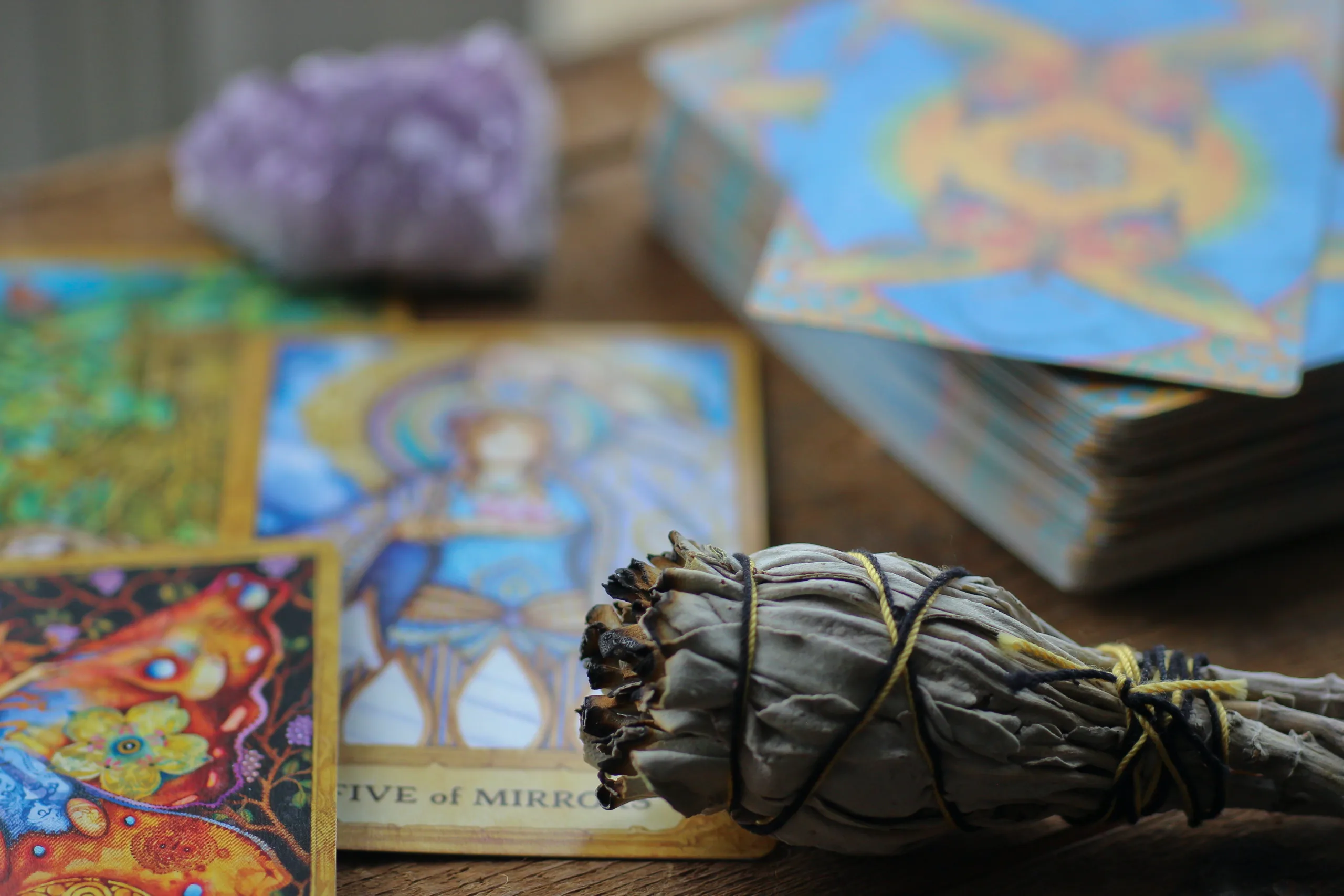Introduction – Exploring the Universe of Tarot Cards
Who is the target audience for tarot cards? A question that remains in the minds of many curious individuals. From spiritual seekers to psychological therapists, tarot cards have fascinated a diverse spectrum of enthusiasts worldwide.
 Image by Kayla Maurais. Source: Unsplash.
Image by Kayla Maurais. Source: Unsplash.
Understanding the Popularity of Tarot Cards
The popularity of tarot cards spans centuries, from their origin as innovative playing cards in 15th-century Italy to mystical divinatory tools in contemporary times. Today, they hold a unique charm, attracting a broad audience with their intricate symbolic designs, depth of potential insight, and ability to provoke introspective dialogue.
Overview of Tarot Card Use Across Different Cultures
Tarot cards traverse cultural boundaries. Use and understanding vary among users from different parts of the globe. In Western cultures, tarot cards traditionally served to predict potential future events. However, in Eastern cultures, they are often more associated with understanding one’s inner journey and spiritual path.
Breaking Down the Diversity of Tarot Card Enthusiasts
As the appeal of tarot cards knows no bounds, this section shines light on its diverse target audience considering different demographic aspects.
Age Demographics: From Teenagers to Senior Citizens
Tarot enthusiasts span from impulsive teenagers exploring self-discovery to senior citizens seeking life reflections. Young adults often use tarot cards as a means of navigating through their chaotic lives, while older individuals appreciate the philosophical perspectives offered by these timeless tools.
Gender Aspect: Is Tarot More Attractive to Women Than Men?
Historically, tarot reading has been more popular among women. Women tend to exhibit greater openness to intuitive thinking and are often more willing to explore emotional and spiritual depths. However, modern day sees an increasing number of men immersing themselves in tarot.
Impact of Profession and Lifestyle on Tarot Card Usage
People from various walks of life find a unique solace in tarot cards. Artists and writers use them as a source of inspiration, while therapists often implement tarot in psychoanalysis for obtaining obscured insights from a patient’s subconscious.
Identifying the Key Reasons for Using Tarot Cards
Below we outline the three most common reasons attracting people to the world of tarot cards.
Spiritual Enlightenment and Self-discovery
Some individuals venture into tarot reading to embark on a spiritual journey. Tarot cards can facilitate self-discovery, aiding individuals to comprehend their inner desires and realize their value and purpose in life.
Psychological Support and Stress Relief
Anxiety and stress are constant struggles of modern life. Tarot readings can offer psychological relief by providing a sense of clarity and peace of mind, helping the user make sense of past experiences and present situations.
Decision-making and Future Projections
Through symbolic representations, tarot cards can illuminate possible outcomes and unforeseen factors in decision-making. Thus, many leverage tarot readings as a tool for navigating uncertainty and gaining a better glimpse into the future.
The Appeal of Different Types of Tarot Decks to Specific Audience Segments
The tarot deck variety is another element that contributes to its extensive audience reach.
Choosing a Deck Based on Aesthetics and Personality
Individuals often opt for decks that resonate with their personal tastes and aesthetic preferences. Some might prefer traditional designs preserved across centuries while others would go for modern renditions or minimalistic styles.
How Thematic Decks Attract Particular Niches
Moreover, distinctive themes cater to specific niche audiences. For instance, animal lovers may be drawn towards wildlife-themed decks, fantasy enthusiasts could opt for mythological or magical decks, adding a personal touch to their tarot-reading journey.
Conclusion – Bridging the Diversity in Target Audience
In retrospect, the target audience for tarot cards is as diverse as the deck designs themselves. Age, gender, profession, lifestyle, spiritual beliefs, personal challenges, and thematic preferences all contribute to the wide reach of tarot cards. Tarot, as a tool for introspection and divination, continues to evolve within our society, drawing together enthusiasts from all walks of life.